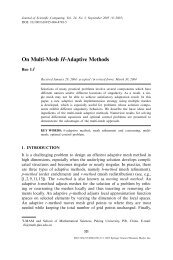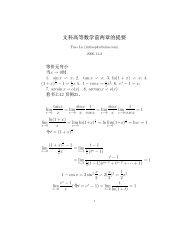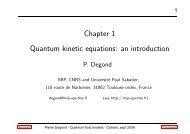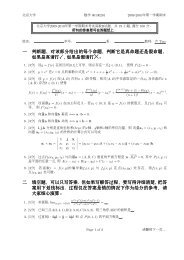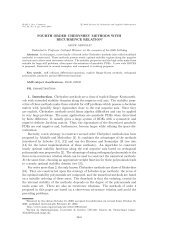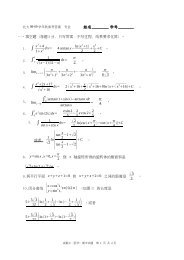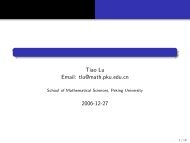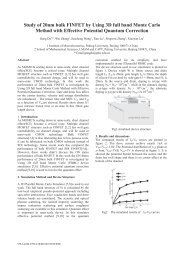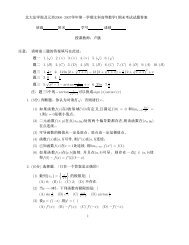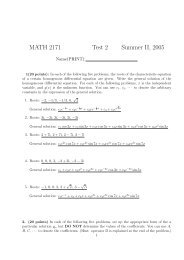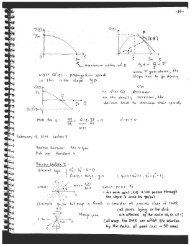Abstract
Abstract
Abstract
Create successful ePaper yourself
Turn your PDF publications into a flip-book with our unique Google optimized e-Paper software.
CHAPTER 4. THEORY 109<br />
Table 4.1 shows the performance of GMRES when applied to the finite-dimensional<br />
problem where the preconditioner ˜ M =(K − 1<br />
τ I)−1 . Here, we show the average num-<br />
ber of Newton iterations per continuation step and the average number of GMRES<br />
iterations per Newton iteration. As the table shows, these values remain relatively<br />
flat as the grid is refined.<br />
Table 4.1: Krylov and Newton Iterations as Mesh Is Refined<br />
Nx Nk Avg. Newton Its. Per Cont. Step Avg. Krylov Its. Per Newton<br />
86 72 2.6 176<br />
172 144 2.5 174<br />
344 288 2.5 173<br />
688 576 2.5 186<br />
This is a reflection of the rapid convergence we expect in the infinite-dimensional<br />
setting. If we were able to prove that Z : L 2 → X was a compact operator, we could<br />
then show Z ′ : L 2 → X is a compact linear operator, and we would be able to apply<br />
the theory given in [21]. In [21], the authors look at a separable real Hilbert space ˜ H<br />
with a subspace X that has a compact linear operator Z ′ that maps ˜ H to X where<br />
they want to solve the equation (I − Z ′ )u = f. In this paper, by using a modified<br />
version of GMRES, the authors prove the error (not the residual) of the GMRES<br />
iterates converge in the X to 0.




